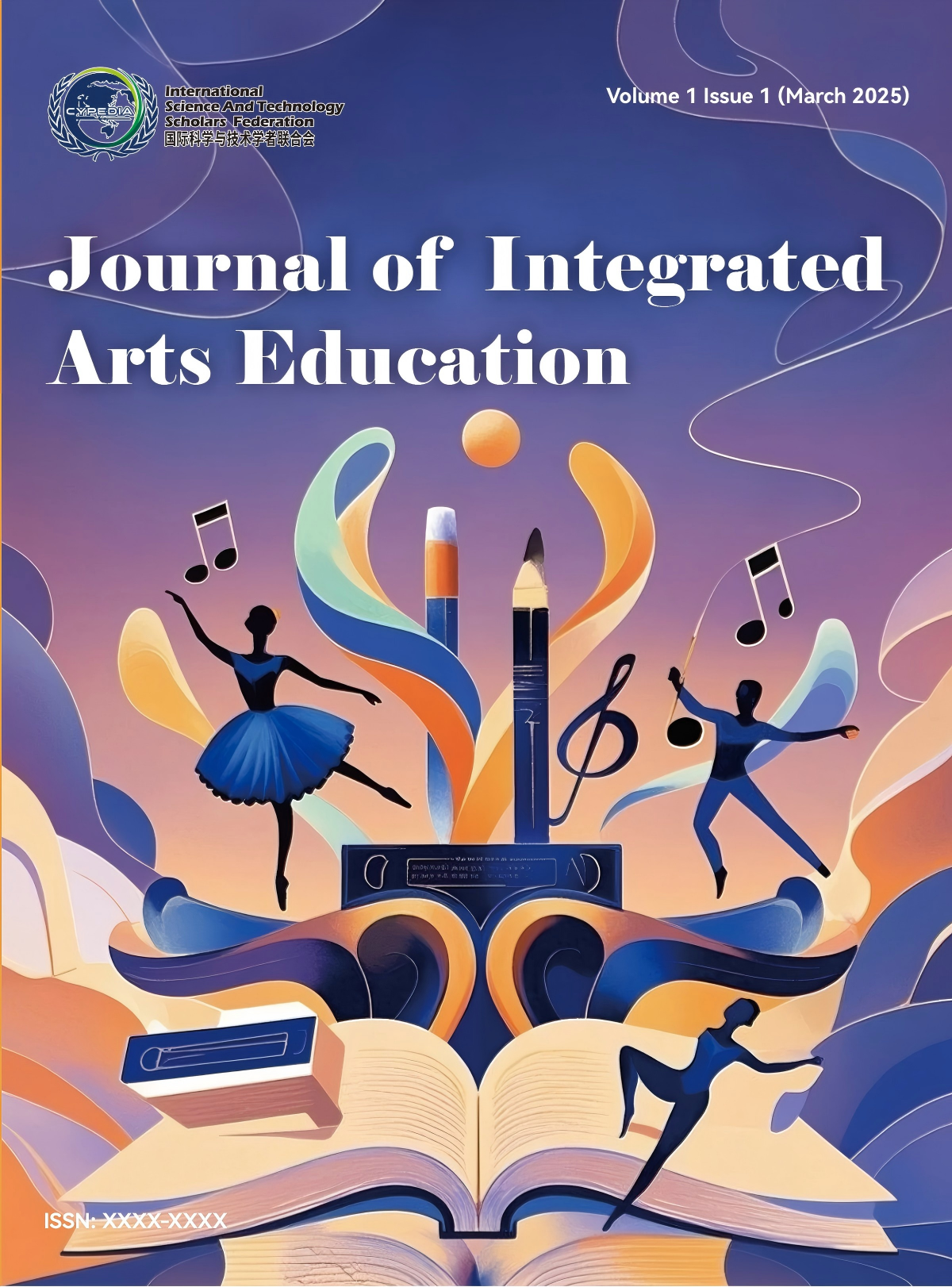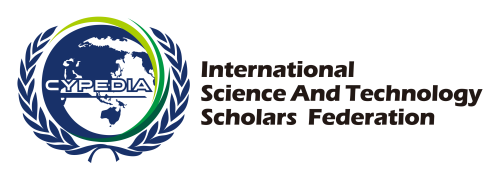Media Arts and Social Technology towards a New Generation of Teaching

Abstract
This article presents the main objectives of an analytical study on the complementary integration of arts education and new technologies to strengthen activities aimed at developing the skills and creative demands of inclusive students. Despite efforts to foster open dialogue and the exchange of experiences, knowledge, and ideas among students and their diverse communities, significant gaps persist in educational integration and in formal processes for developing new media arts initiatives in the development of digital literacy. To this end, the alternative interdisciplinary methodology strengthens the teaching model to facilitate the development of skills and attitudes through problem-solving in artistic creativity for students, supported by digital resources in the teaching and learning processes of the complementary subject. Of course, methodological restructuring is carried out through the connection with cooperative learning for the most vulnerable students and excluded schools to ensure equitable access and technological training. Proposal for innovative teaching for media arts and social inclusion in a globalized society characterized by constant innovation and diversification in educational technology. Some key points to improve the teaching-learning process, depending on the concept of the didactic proposal through pedagogical development within the inclusive school. Finally, by integrating new media art into the virtual classroom, arts education is redefined, allowing students not only to acquire technological skills but also to explore and express their creativity in meaningful ways, contributing to the construction of a more just and equitable society.
Keywords
Integration, Inclusive Education, Digital Innovation, Cultural Diversity, Interdisciplinary Methodology, Globalized Society
References
- Bernaschina, D., 2023. Media Arts in Education: A View from Teaching in Primary and Secondary Schools. Revista Ensayos Pedagógicos. 18(2), 1–23. (in Spanish)
- Bernaschina, D., 2018. ICTs and Media Arts: the new digital age in the inclusive school. Alteridad. 14(1), 39–50.
- Bernaschina, D., 2023. Social Pedagogy and Media Arts: innovative proposal for inclusive schooling. Alteridad. 18(2), 158–169.
- Sulistyarini, S., Dewantara, J.A., Adha, M.M., 2023. Civic education and citizenship studies in culture, identity, and art. Jurnal Pendidikan PKN (Pancasila dan Kewarganegaraan). 4(1), 1–5. DOI: https://doi.org/10.26418/jppkn.v4i1.64362
- OEI, 2009. Report: Arts, Culture, and Citizenship Education Program (in Spanish).
- Oller Badenas, J., Vila Mendiburu, I., 2011. Teixint cultures A community program that promotes different cultural identities and builds a public space for dialogue and coexistence . In: García Castaño, F.J., Kressova, N. (Eds.). Actas del I Congreso Internacional sobre Migraciones. Instituto de Migraciones, Universidad de Granada: Granada, Spain. pp. 1575–1584.(in Spanish)
- Ortiz Ocaña, A., 2004. Methodology of problem-solving teaching in the classroom. ASIESCA: Barranquilla, Colombia.(in Spanish)
- Ortiz Ocaña, A., 2006. Pedagogical, Didactic and Methodological Topics. CEPEDID: Barranquilla, Colombia.(in Spanish)
- Ortiz Ocaña, A., 2008. Education and the development of creativity: a challenge in the training of professionals. Praxis. 4(1), 84–107. (in Spanish)
- Ortiz Ocaña, A., 2009. Dictionary of pedagogy, didactics and methodology. Antillas: Barranquilla, Colombia.(in Spanish)
- García-Valcárcel, A., 2016. Digital resources for improving teaching and learning (in Spanish).
- Said Hung, E., Valencia Cobos, J., Iriarte Diazgranados, F., et al., 2015. Chapter I: General framework of the program (in Spanish). In: Said Hung, E. (Ed.). Towards the promotion of ICT in the education sector in Colombia. Universidad del Norte: Barranquilla, Colombia. pp. 8–102. Available from: https://dialnet.unirioja.es/servlet/articulo?codigo=5271984
- Oralbekova, A., et al., 2021. Teachers’ readiness to use ICT in the conditions of inclusive education. In: Kankhva, V. (Ed.). Proceedings of the Ural Environmental Science Forum “Sustainable Development of Industrial Region” (UESF-2021); Chelyabinsk, Russia; 17–19 February 2021. E3S Web of Conferences. EDP Sciences: Les Ulis, France. Volume 258, p. 07021.
- Bahamond Panamá, A., 2012. Art Processes in El Salvador. Conmemorativa del Bicentenario: San Salvador, El Salvador. (in Spanish)
- Alderete, M.V., Di Meglio, G., Formichella, M.M., 2017. ICT access and educational performance: a relationship enhanced by ICT? An analysis for Spain. Revista de educación. 377, 54–81. (in Spanish) DOI: https://doi.org/10.4438/1988-592X-RE-2017-377-353
- Johnson, D., Johnson, R., 2019. Cooperative Learning: The Foundation for Active Learning. In: Brito, S.M. (Ed.). Active Learning - Beyond the Future. IntechOpen: London, UK. DOI: http://doi.org/10.5772/intechopen.81086
- Bernaschina, D., 2020. Deaf teacher/artist and main teacher duo: new pedagogical strategy for art and inclusive education. KNOWLEDGE-International Journal. 55(2), 217–220. Available from: https://www.academia.edu/102249542/Deaf_teacher_artist_and_main_teacher_duo_new_pedagogical_strategy_for_art_and_inclusive_education
- Martínez, O., 2011. Analysis of 3. Community culture and ICT development. In: Casacuberta, D., Rubio, N., Serra, L. (Eds.). Acción cultural y desarrollo comunitario. Graó: Barcelona, Spain. pp. 95–100. (in Spanish)
- Ainscow, M., 2002. Understanding the development of inclusive schools. Routledge: London, UK.
- Ainscow, M., 2005. Developing inclusive education systems: what are the levers for change? Journal of Educational Change. 6(2), 109–124. DOI: https://doi.org/10.1007/s10833-005-1298-4
- Amadio, P., Opertti, L.M., 2011. Chapter 5: Inclusive education, paradigm shifts and renewed agendas in Latin America. In: Amadio, P., Opertti, L.M. (Eds.). Derechos de la infancia y educación inclusiva en América Latina. Granica: Buenos Aires, Argentina. pp. 195–226. (in Spanish)
- Díaz, J., 1999. Teaching and learning basic motor skills and abilities. INDE: Barcelona, Spain. (in Spanish)
- García, M., González, A., Franco, J.M., 1990. Research and new technologies in art education. Arte, Individuo y Sociedad. (3), 163–168. (in Spanish) Available from: https://revistas.ucm.es/index.php/ARIS/article/view/ARIS9090110163A
- García Cedillo, I., Fletcher, T., Romero Conteras, S., 2009. Chapter 8: Advances and challenges of inclusive education in Latin America. In: Casanova, M.A., Rodríguez, H.J. (Eds.). La inclusión educativa, un horizonte de posibilidades. La Muralla: Madrid, Spain. pp. 225–272. (in Spanish)
- González, V., 2003. Teaching and learning strategies. Pax: Ciudad de México, México. (in Spanish)
- Guerrero, E., 2014. Development of multimedia teaching materials. Marpadal Interactive Media: Albacete, Spain. (in Spanish)
- Ibáñez-Salgado, N., Díaz-Arce, T., Druker-Ibáñez, S., et al., 2012. The understanding of diversity in interculturality and education. Convergencia. 19(59), 215–240.
- Puigdellívol, I., 2003. Inclusion Experiences: Presentation. Revista Aula de Innovación Educativa. (121), 35–36. (in Spanish) Available from: http://hdl.handle.net/2445/44324
- Puigdellívol, I., 2016. When inclusion is well-developed in schools, the quality of teaching inevitably increases [Interview] . (in Spanish) Available from: http://www.ub.edu/web/ub/es/menu_eines/noticies/2016/entrevistes/puigdellivol_ignasi.html
- Saiz, M., 2009. The educational model we want. In: Macarulla, I., Saiz, M. (Eds.). Good practices for inclusive schools. The inclusion of students with disabilities: a challenge, a necessity. Graó: Barcelona, Spain. pp. 9–36. (in Spanish)
- Slee, R., 2012. A Different School: Schooling and Inclusive Education. Morata: Madrid, Spain. (in Spanish)
- Carbone-De-Mora-Campos, G., 2017. Art in the Digital Age. Lienzo. (021), 231–243. (in Spanish) Available from: https://revistas.ulima.edu.pe/index.php/lienzo/article/view/1615
- Cabero Almenar, J., Fernández Batanero, J.M., A look at ICT and inclusive education. Centro de Comunicación y Pedagogía. (in Spanish) Available from: http://www.centrocp.com/una-mirada-sobre-las-tic-y-la-educacion-inclusiva/
- Santoveña Casal, M.S., 2004. Teaching methodology in virtual learning environments. Etic@net: Revista científica electrónica de Educación y Comunicación en la Sociedad del Conocimiento. (3), 1–9. (in Spanish) Available from: https://www.ugr.es/~sevimeco/revistaeticanet/Numero3/Articulos/Formateados/metodologia_didactica.pdf
- Hamill, A., 2013. Learning ICT in the Arts. Teaching ICT through the Primary Curriculum. David Fulton Publishers (Routledge): London, UK.
- Marfil-Carmona, R., Chacón, P., 2017. Chapter 13: Relationship between digital culture and teaching of visual arts from the perspective of primary education students. Educación, salud y TIC en contextos multiculturales: Nuevos espacios de intervención. Universidad Almería: Almería, Spain. pp. 151–159. (in Spanish) Available from: https://dialnet.unirioja.es/servlet/articulo?codigo=6570001
- Rey Cao, A., 2010. The Critical Perspective in Intercultural Visual Literacy Programs: Adaptation or Production? In: Gómez Díaz, R., Agustín Lacruz, M. (Eds.). Polisemias visuales. Aproximaciones a la alfabetización visual en la sociedad intercultural. Universidad de Salamanca: Salamanca, Spain. pp. 201–210. (in Spanish)
- Wilkinson, C., Weitkamp, E., 2016. Creative Research Communication: Theory and Practice. Manchester University Press: Manchester, UK.
